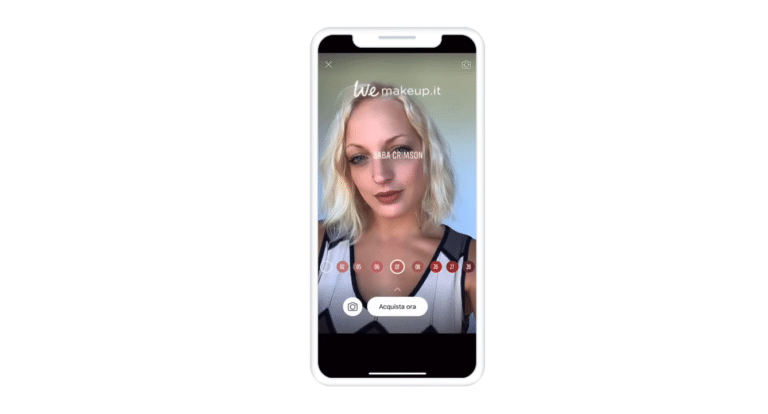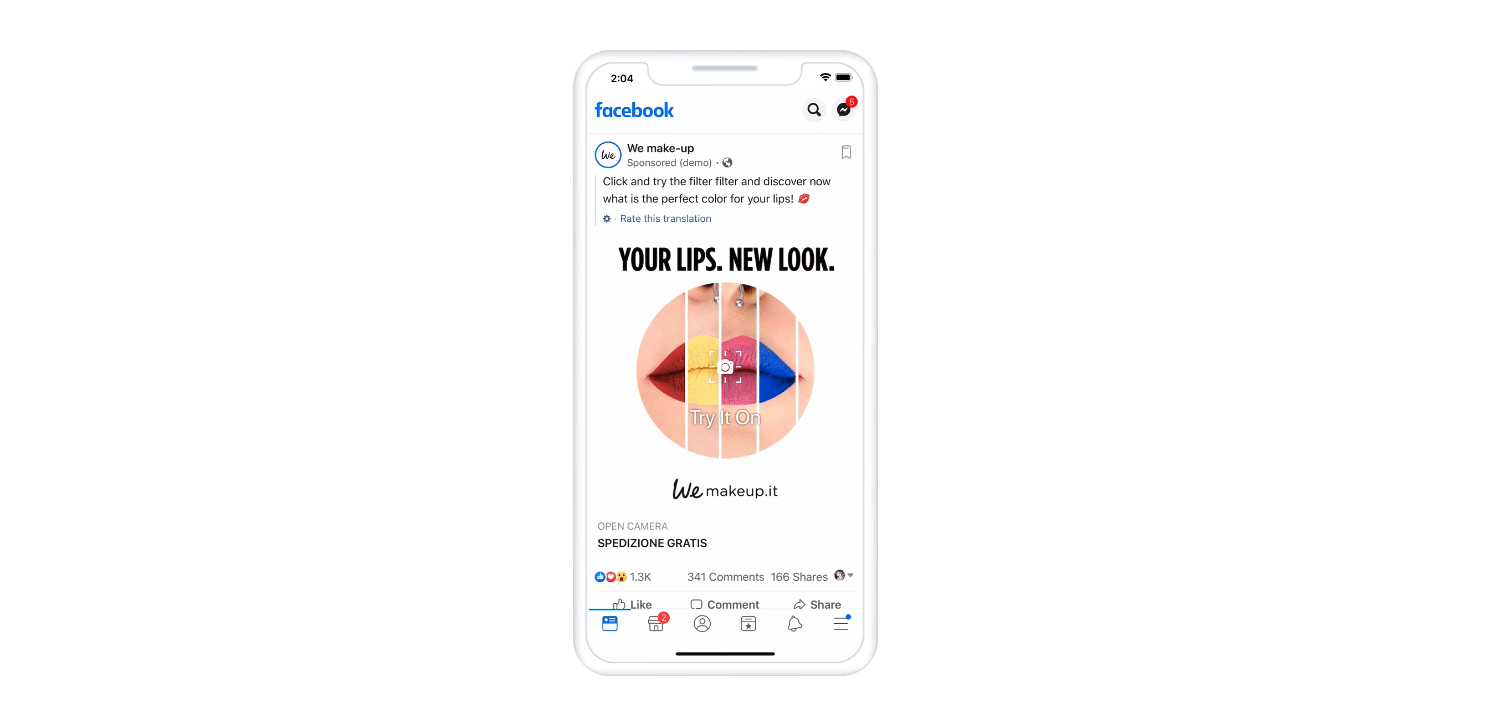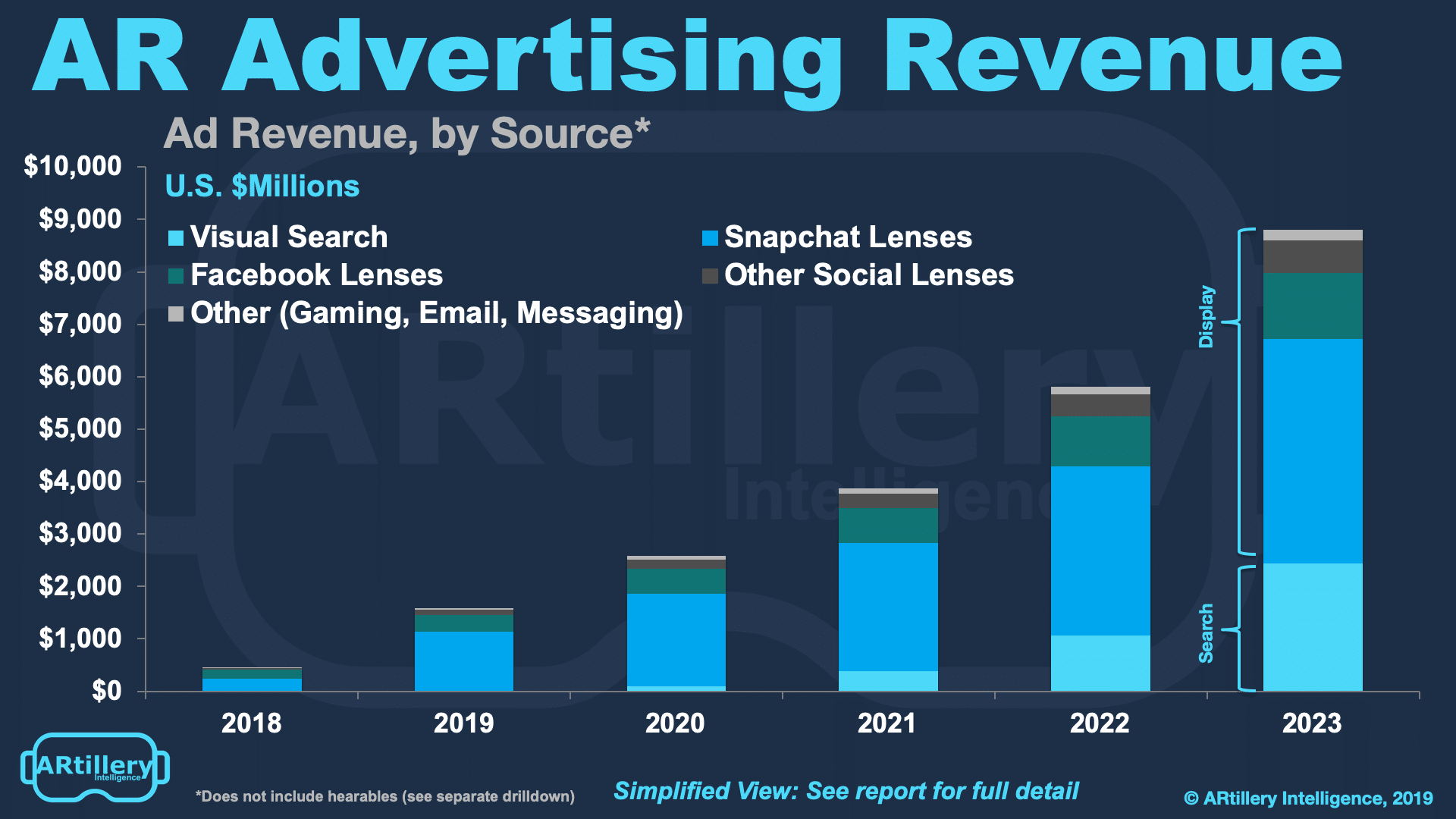
This is the latest in AR Insider’s Campaign Tracker series. Running semi-weekly, it examines marketing campaigns that utilize AR visualization such as product try-ons, and their results. For a full list of campaigns, comparative ROI chart and deeper analysis, subscribe to ARtillery PRO.
Evidence continues to roll out for AR’s efficacy as an ad medium. Though still in the minority, early-adopter brands are learning that AR lets them demonstrate products in immersive ways. That can include brand engagement (upper-funnel) or “try before you buy” (lower-funnel).
In the former category, we’re seeing things like letting users pose with superheroes in AR to promote upcoming film releases. For the latter, it’s product try-ons using the front-facing camera (sunglasses, cosmetics) or rear-facing camera (cars, couches). Results are strong for both.
The latest evidence on the product try-on side of the AR ad spectrum is WeMakeUp’s recent AR campaign on Facebook. Like many other cosmetics AR integrations, this let consumers try on various shades of lipstick. This use case is becoming an early leader in AR-powerded ads.

More importantly, it’s working, which provides a sort of feedback loop for the category’s continued revenue growth and ROI analysis. Specifically, the AR-fueled WeMakeUp campaign drove a 27.6 percent lift in purchases over non-AR benchmarks, and 38-second average session lengths.
Taking those one at a time, session lengths are a key performance indicator (KPI), as we examined recently. Common mobile ad metrics (e.g. clicks, impressions, etc) will fail to grasp AR’s deeper engagement and ROI. Session lengths don’t fully capture it either but they get us closer.
The real answer, when possible, is to track performance all the way through the consumer journey to an actual conversion, as the WeMakeUp campaign does. Regardless of engagement metrics, what brands ultimately want is a clear indication of revenue lift over existing formats.
In this case, 27.6 percent is statistically significant. More importantly, it’s a meaningful ROI from a brand advertiser’s perspective. In that respect, it’s more telling for ROI than things like 30 percent AR activation rates (sans revenue lift) that we’ve tracked in AR cosmetics campaigns elsewhere.

Facebook also revealed as part of this campaign performance announcement that 63 percent of internet users claim they’ve tried a branded AR experience. That demand signal is key, given that brand advertisers are reach-oriented. Campaign performance is great but they also need scale.
It’s also worth noting that campaigns like the above are limited in quantity because Facebook’s beta for AR Ads is still closed. It (including Instagram) is working with a limited set of advertisers as it works out the kinks. But it claims it will open the beta to the rest of the brand ad world this Fall.
Stay tuned for more AR campaign tracking in this ongoing series, including ROI metrics, best practices, and the evolution of the metrics themselves. The latter will be critical to AR advertising’s maturation, pursuant to demonstrating ROI and attracting more brand spending.
For deeper XR data and intelligence, join ARtillery PRO and subscribe to the free AR Insider Weekly newsletter.
Disclosure: AR Insider has no financial stake in the companies mentioned in this post, nor received payment for its production. Disclosure and ethics policy can be seen here.
Header Image Credit: Facebook
